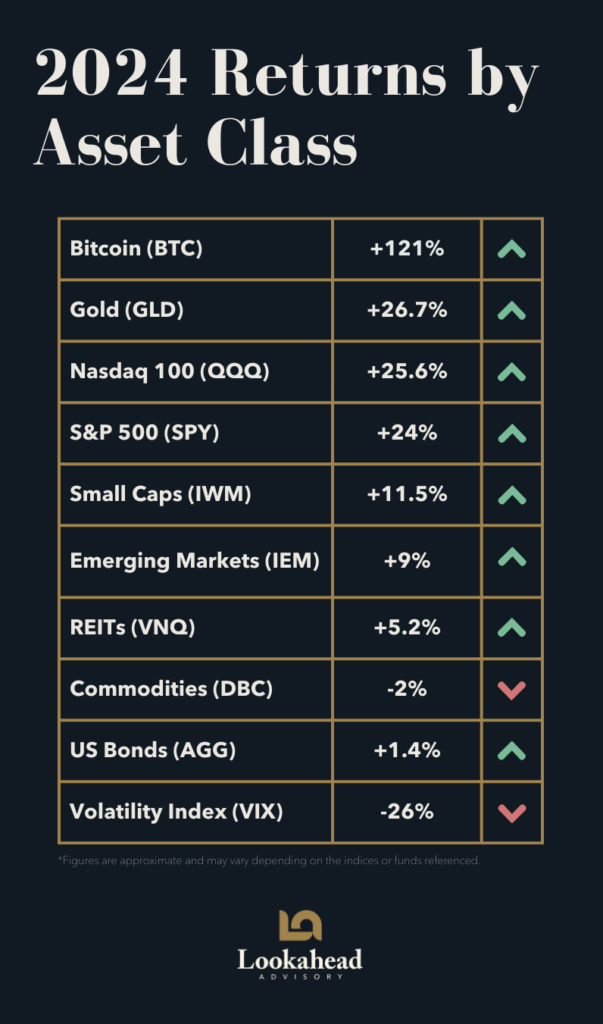Portfolio diversification is critical to reducing risk when investing.
By varying the types of assets, you minimize your exposure to market volatility—meaning you’re far more likely to see stable returns and reach long-term financial goals.
But what does a diversified portfolio look like? How can you tell if your investments are still properly diversified?
These answers ultimately depend on three things: time, tolerance, and expectations.
Key Takeaways
- Investment diversification is a long-term strategy that can help mitigate risks and achieve more consistent outcomes.
- Everyone should have a diversified investment portfolio. But it should be specific to your risk tolerance, time horizon, and goals.
- You should regularly revisit your diversification strategy to confirm if it still fits your needs.
Understanding Portfolio Diversification
Diversification involves spreading investments across different asset classes—such as equity, bonds, real estate, and commodities—to offset a decline in any single asset. This strategy reduces volatility and enhances the likelihood of achieving more consistent returns over time.
For example, bonds and stocks tend to have an inverse correlation. If the stock market experiences a downturn, investment often shifts to lower-risk assets like bonds, which increases demand and price.
It may not perfectly zero out your losses but having a well-diversified portfolio will mitigate some damage.
Factors That Impact Your Diversification Strategy
The reality is there is no cookie-cutter approach to diversification. As I mentioned earlier, answering what a diversified portfolio looks like comes down to your specific:
- Time Horizon: The length of time you plan to hold onto your investments before needing access to the funds.
- Risk Tolerance: How much volatility you are financially and emotionally able to manage.
- Financial Goals: Long-term objectives like saving a certain amount for retirement and short-term goals like paying for your daughter’s college tuition.
The weight of each factor will change for you over time.
An investor in their 20s, who is further out from retirement and has immediate aspirations of paying off loans, can likely stomach greater losses for the potential of higher returns. But someone five years from retirement who wants to spoil their grandkids would be risking everything with the same portfolio.
Each stage of life brings about new challenges and priorities. You’ll need to adapt and your asset allocation should do the same.
Asset Allocation and Its Impact on Returns

Asset allocation is the actual distribution of investments across different asset classes—such as stocks, bonds, cash, real estate, and commodities—within your portfolio.
While you shouldn’t just consider recent performance when developing your investment strategy (otherwise going all in on Bitcoin would be really tempting) it can provide signs of where things might be headed.
Here are my thoughts on what last year’s performance may mean for 2025:
Equity Dominance and Tech Resilience
The strong performance of U.S. stocks, particularly the tech-heavy Nasdaq-100, suggests that:
- Growth and innovation continue to drive market returns, despite concerns about valuations.
- Investors should be cautious about underweighting U.S. equities or tech stocks based solely on valuation metrics.
- The outperformance may lead to overexposure in portfolios, necessitating rebalancing to maintain target allocations.
Fixed Income Challenges
The underwhelming performance of bonds in 2024 highlights several key points:
- Traditional portfolio hedges may not provide the same level of protection as in previous market cycles.
- Active management in fixed income may become more critical, focusing on credit selection and duration management.
- There may be a need to consider alternative strategies for portfolio stabilization, such as options or structured products.
Real Estate’s Steady Contribution
The moderate returns in this asset category suggest:
- Real estate continues to offer a balance of income and potential appreciation, making it a valuable diversifier.
- The 5.2% yield from REITs may become more attractive if equity returns normalize in the future.
- There will be a need to track sector-specific trends, as different property types may act differently in the current economic environment.
Commodities Divergence
The mixed performance in this asset category, with gold outperforming other industrial commodities, indicates:
- Gold’s strong performance may be a sign of underlying economic uncertainties or inflation concerns.
- The underperformance of industrial commodities suggests caution regarding global economic growth prospects.
- Gold should be considered as a portfolio diversifier and potential hedge against geopolitical risks.
Maintaining a Diversified Portfolio
“In investing, if you’re comfortable with every part of your portfolio, you’re probably not diversified enough.” — Peter Lynch, manager of the Magellan Fund
One thing I hope you take away from this analysis is performance varies across asset classes.
Just because your investments did well recently does not guarantee that performance will continue. You may also miss out on more impactful investments by just setting and forgetting your portfolio.
That’s why regular reviews and rebalancing (outside of major life events) are necessary. If you’re unsure about making adjustments yourself, consider working with a professional wealth advisor who can:
- Handle regular portfolio reviews and rebalancing
- Customize your diversification strategy
- Provide expert market insights
- Implement tax-efficient strategies
- Offer objective advice during market volatility
Remember diversification does not guarantee a return or always protect you from a loss. But by staying on top of your finances and working with an experienced advisor you’ll greatly improve your chances.


